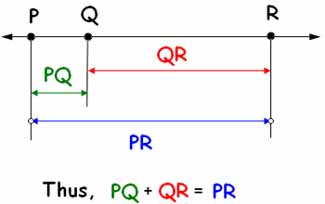
 |
|
|
|
The Segment Addition PostulateThe phrase "Segment Addition Postulate" can be a little intimidating, especially at the beginning of a Geometry or Honors Geometry course. However, we will show you that this postulate is nothing more than breaking sticks...and then putting them back together. You can do that right? Okay, good. So let's simplify this "intimidating" topic.
Finally, put the two pieces back together. Measure the length of the skewer or stick now that it is put back together.
Congratulations, you just modeled the postulate.
All this means is...if you take one piece of a segment (PQ), and add it to another piece of a segment (QR), you get the entire segment (PR). "The sum of the parts equals the whole." Return from Segment Addition Postulate to Free Geometry Help.
|
| . | ||
| Home │ Site Search │ Math Help Blog │ Help Keep GradeA Free | |
Written by Team GradeAmathhelp.com, all rights reserved. | ||
 Next, measure the length of your object. Our skewer is 8 inches long.
Next, measure the length of your object. Our skewer is 8 inches long. Our skewer is still 8 inches like it was originally. Does this seem easy and obvious? Good, it should!
Our skewer is still 8 inches like it was originally. Does this seem easy and obvious? Good, it should!
